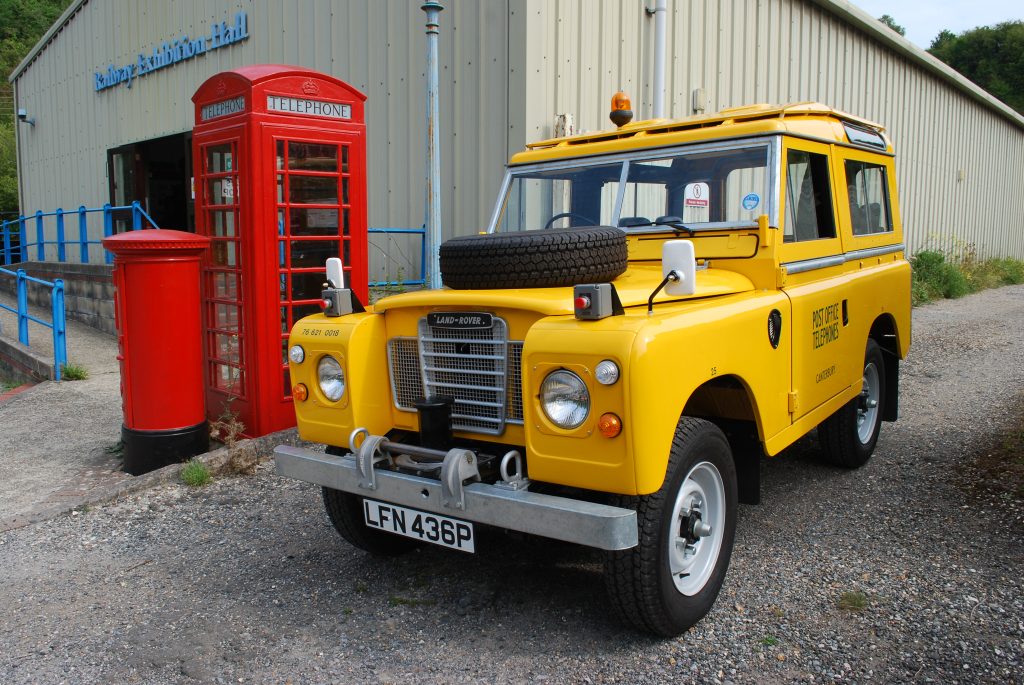
Richard Murrell’s 1976 Land-Rover Safari was new to the Post Office, and then spent a quarter century with a sheep farmer on the South Downs. Since buying it in 2017, Richard has carried out a full restoration, and the result is stunning. Mike Neale tells the story.
Land-Rover inytroduced the Series 3 in the autumn of 1971. It had unchanged engines from the previous Series 2A, comprising four-cylinder 2286cc petrol or 2286cc diesel units available on all models. A six-cylinder 2625cc petrol engine also offered on the 109in wheelbase version. From 1979, the six-cylinder engine was replaced by the 3528cc V8.
The four-speed main gearbox now had synchromesh on all forward gears (introduced on the last Series 2A Station Wagons). There was a new gearlever, a new padded dashboard with dials in front of the driver rather than centrally mounted, a more powerful factory optional extra heater, suspension improvements and, on the 109” version, a heavier duty back axle. A 9½in. diaphragm spring clutch was fitted to all models. This had previously only been fitted to diesel and six-cylinder versions.
Four wheel drive
The two-speed transfer gearbox had selectable two-wheel-drive or four-wheel-drive in high range, and permanent four-wheel-drive in low range. There were drum brakes all round, servo-assisted as standard on six-cylinder and later V8 models and an option on other models.
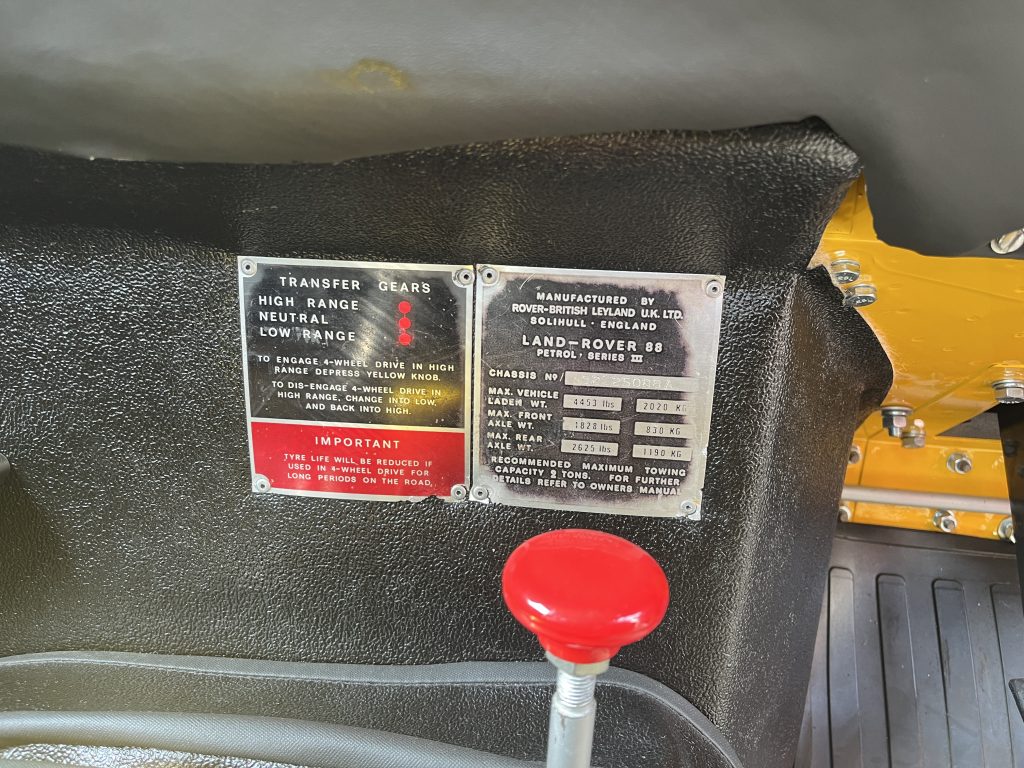
Externally it could be identified by its ABS plastic radiator grille. The headlights had already moved out to the front wings on late Series 2As) and flatter door hinges on the side doors. Station Wagons had the “Safari roof” fitted as standard with roof windows and a double skin allowing ventilation. This was available as an option on other hardtop models. Headlamp bezels were body coloured until 1982, after which they were silver painted.
The Series 3 remained in production until 1985. They were the last Land Rover with leaf springs and replaced by the Defender which had coil spring suspension.
Land-Rovers were not the solke preserve of farmers and the armed forces. The General Post Office and its successors bought several, from the Series 1 onwards, beginning in 1950. They used them in the Royal Mail fleet and for Post Office Telephones purposes, as well as serving as Post Buses. The POst Office also used Forward Control Land-Rovers.
New in Canterbury
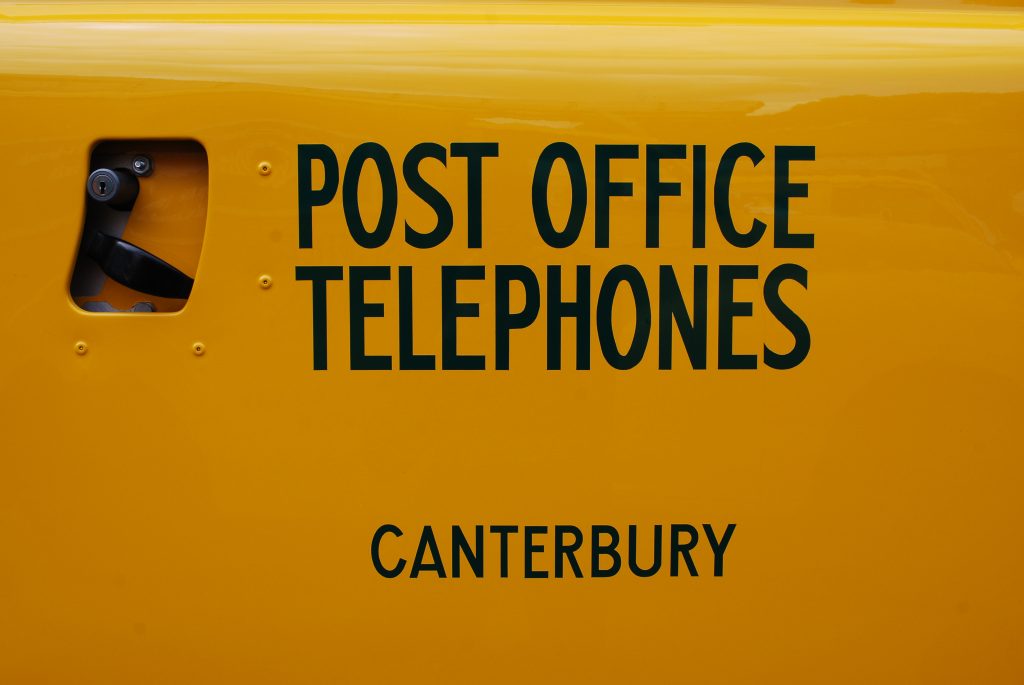
This particular Series 3 was new to Post Office Telephones in June 1976 and allocated to the Telephone Manager, Canterbury. It was one of a batch of 36 88in Station Wagons with the Safari roof and fitted with Aeroparts winches for installing underground cabling. The winch cable drum was sometimes positioned inside the cab in place of the front passenger seat. In service it would have towed a four-wheel trailer, often accompanying another vehicle towing a larger cable drum trailer. The seats in the back of the Land-Rover would carry telephone engineers on a job.
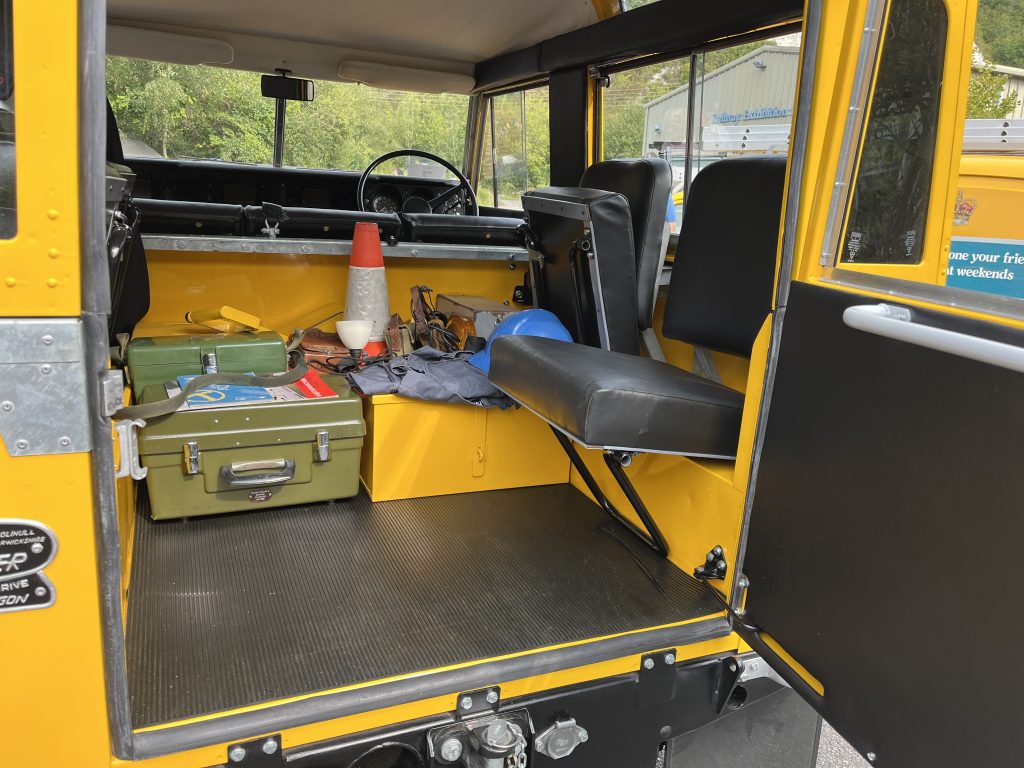
It worked around East Kent until 1985. After that it became the workshop van at Folkestone and served what was by then British Telecom PLC for 16 years up to 1992. Land-Rovers tended to have longer service lives than most other vehicles on the Telephones fleet, especially if they became workshop vehicles.
Three owner Land Rover
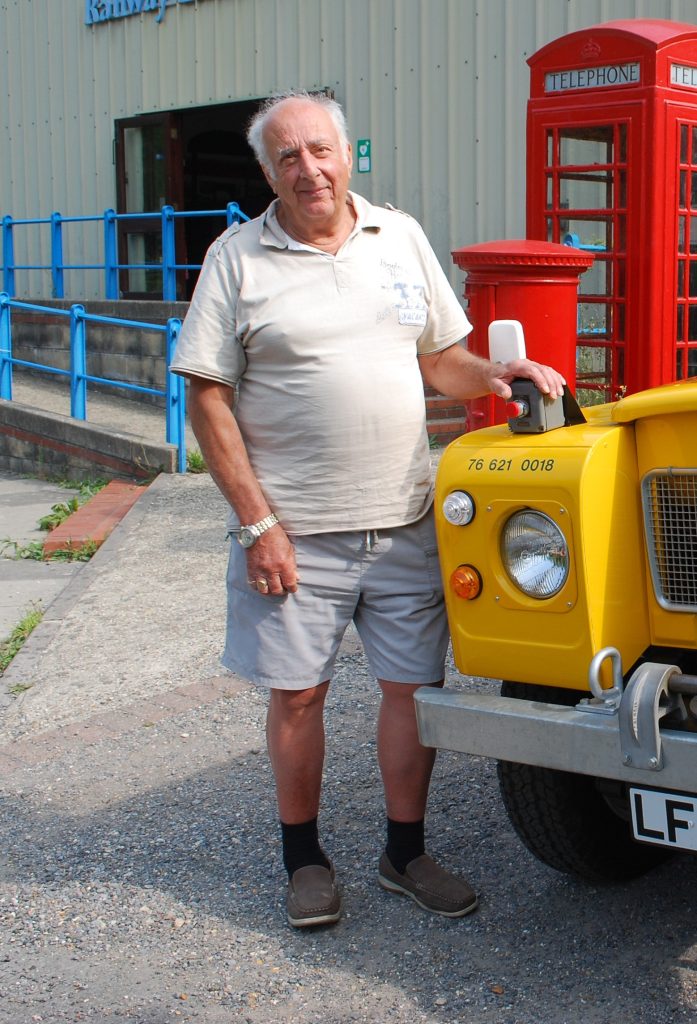
Richard Murrell from Eastbourne acquired the Land-Rover in 2017, becoming only its third owner. He had been after it for twenty years, as he knew its previous owner. She had bought it at auction in 1992 via the Thatched Garage in East Hoathly, (who still specialise in Land-Rovers), when it was disposed of by BT. She had given Richard first refusal on the vehicle, and went as far as to write this into her will. So when she passed away Richard bought it, with the money going to charity.

She had used the Land-Rover for looking after her sheep up on the South Downs. Richard has put a sheep sticker in the back window in her memory. It was left pretty much as it was when British Telecom had it, and still yellow, although much of it had been hand repainted over the years, in various shades.
Disgusting!
When Richard got it, as is often the way, it turned out to be worse than he thought. “It was disgusting!” recalls Richard, due to the, shall we say, ‘sheep residue’. “The steel bulkhead was so rotten it had to be replaced. Two new wings had been put on, but they were full of filler. The window channels had a load of mastic applied where they had leaked. The owner’s husband had hand-made gaskets and exhaust parts to save money and keep it going. Inside the door cards were missing, two of the seats were missing and the headlining had fallen off.”
“It did run when I got it – sort of. It also sort-of stopped. There was some smoke coming out of the wiring, so I stopped using it until it was restored,” Richard explains.
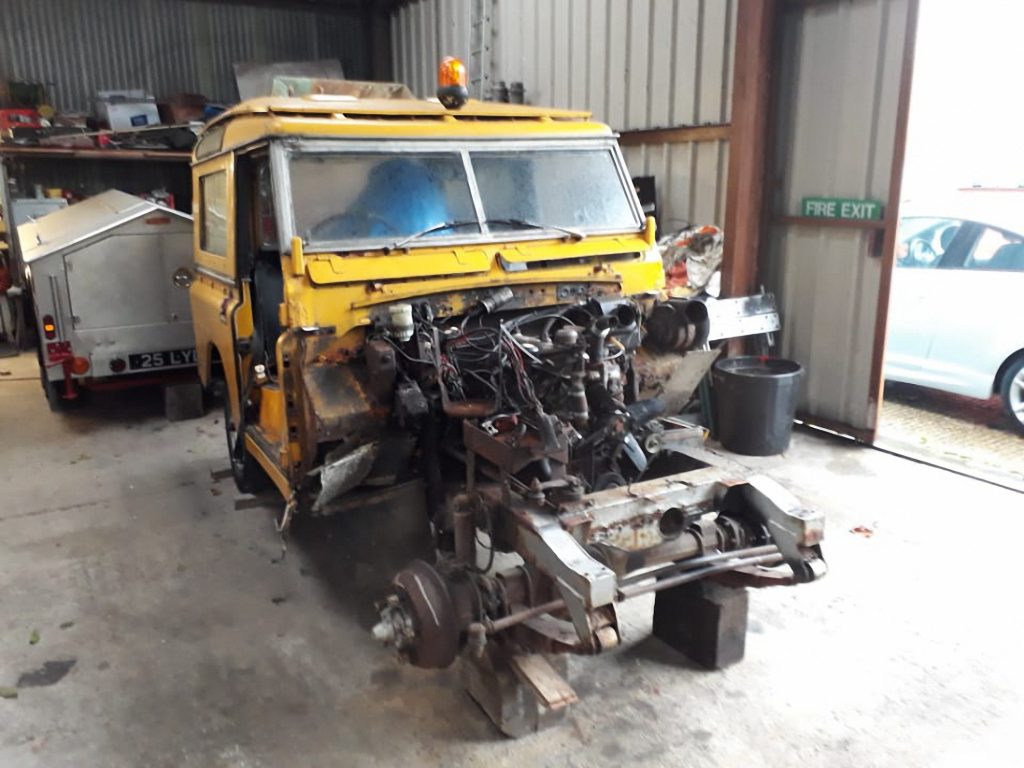
Richard was nevertheless pleased to have it, as he had always fancied a Land-Rover and wanted this one because it was so original. Many of the original Post Office fittings also remained. These included the high-level rear indicators were a Post Office specification so that they could be seen when the vehicle was pulling the trailer. The holes where the indicators normally go were blanked off with rubber bungs. On the wings there are emergency stops for the capstan. Like many Land-Rovers, the spare wheel is mounted on the bonnet.
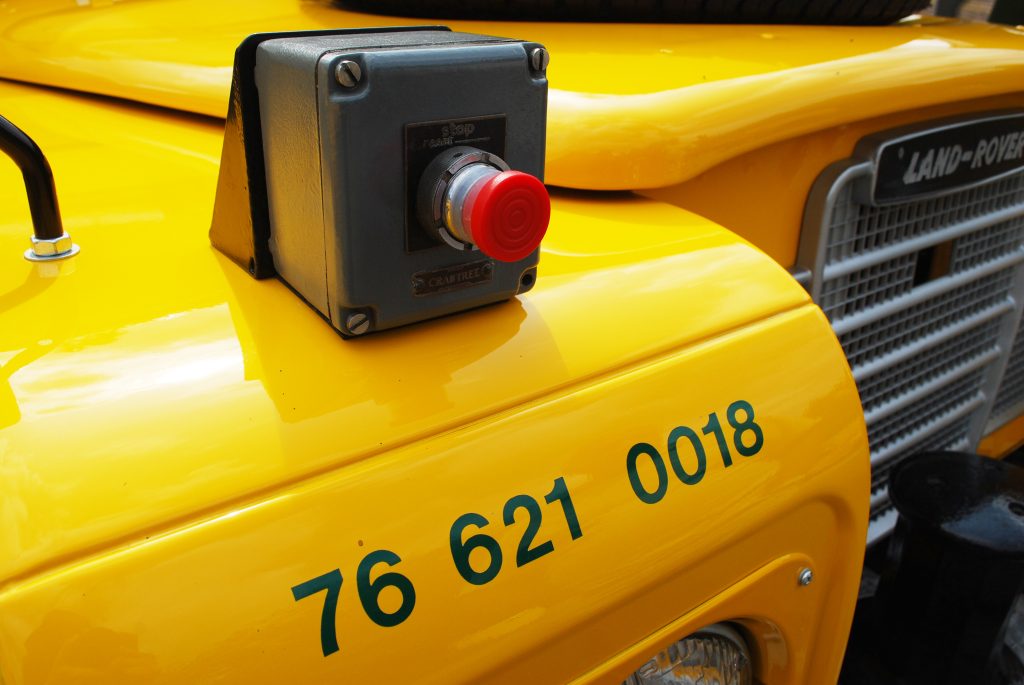
Land Rover Restoration
Richard stripped everything down and repaired all the outer panels, apart from the doors which he renewed. He was keen to reuse as much of the original as possible. “There were hundreds of pop rivets, so I asked for a pop rivet gun for my Christmas present. The mudflaps were a birthday present!” laughs Richard. “I replaced the chassis with a galvanised one, painted black so it looks original.”

He made new inside panels, retrimmed the seats, stripped and cleaned the vents, fitted a new headlining and installed new wiring. New white Wingard mirrors were sourced.
He also re-covered the dashboard, his first experience of trimming a dash in vinyl. The outside trim strips were all regalvanised, including the windscreen surround. “It took ages to get the glass out without breaking it,” recalls Richard.
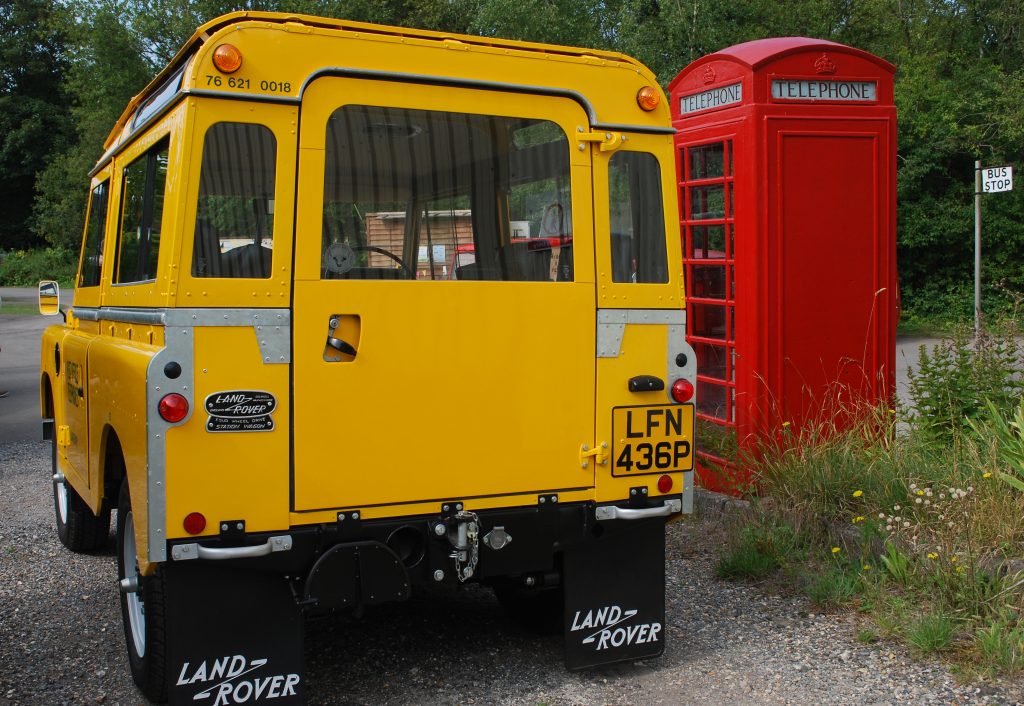
Two years to complete
Richard took about two years to complete the restoration. He did everything himself apart from the gearbox overhaul, which was done by a specialist, and the paintwork, which was done in two-pack in Brilliant Yellow. This is the familiar shade which began being used on GPO Telephones vehicles in 1968/69 and continued through Post Office Telecommunications liveried vehicles into the British Telecom era of 1981 and also on the first vehicles of privatised British Telecom plc. from 1984.
The Post Office Telephones lettering came via the Post Office Vehicle Club, of which Richard is a member. They also advised on the correct original livery and specification. The numbering system was introduced in 1971 for new vehicles and from 1972 was applied to existing ones. The ‘76’ denotes the year, whilst ‘621’ signifies a Land-Rover, with serial numbers 0001-0036 allocated to this batch of 88in Station Wagons fitted with Aeroparts winches, this one being number 0018. From 1981 when British Telecom was formed, Land-Rover 88in personnel carriers fitted with a winch were recoded to ‘369’ instead of ‘621’. The dashboard stickers were remade, but the metal plaques on the dash are the originals.
Not Concours
“It’s not intended to be concourse – I wanted it to look like a new vehicle in service. Although it probably looks better than out of the factory!” notes Richard. “Being a Land-Rover, spares availability is good. There’s also a company in Hailsham that will make parts.”
“The 2¼ litre petrol engine didn’t seem to have anything wrong with it, Richard continues. “On the road it’s an interesting drive. It’s not so good uphill. 40-50mph is a comfortable cruising speed, although it probably should go a bit faster really.” Having once driven a Series 2A Land-Rover myself from London to the Dordogne, where on hilly French motorways it would drop to 30mph on an uphill stretch and just about hit 70 on a long downhill gradient, so perhaps this is not unusual.
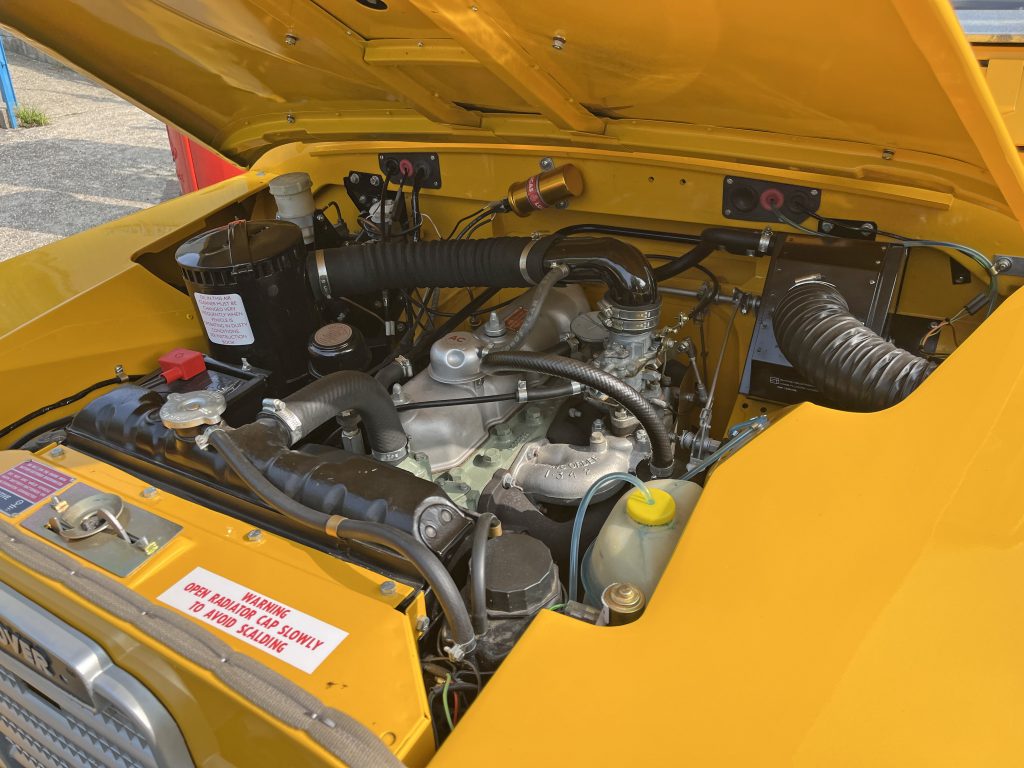
Richard has been restoring vehicles for most of his life, and he enjoys using them when done. He has also owned a 1961 ex- Somerset Fire Brigade Dennis F28 which was retrieved from a local scrapyard since 1985 and it, too, has been fully restored.

Both vehicles are now taken to shows as often as possible. So far, the Land-Rover hasn’t been out in the rain, though. The POVC is aware of just one other ex-Post Office Telephones Land-Rover Station Wagon from the 1976 batch in preservation (number 0033), although there may be others out there that are concealing their original identity, if they have been repainted and had BT-specific equipment removed.
With thanks to Richard Murrell and to the Post Office Vehicle Club (https://www.povehclub.org.uk/) for their input to this article and to Amberley Museum (https://www.amberleymuseum.co.uk/).
To read more articles like this every month, subscribe to Classic & Vintage Commercials magazine by subscribing here. And find the latest news, exclusive looks and more at the CVC website here.

